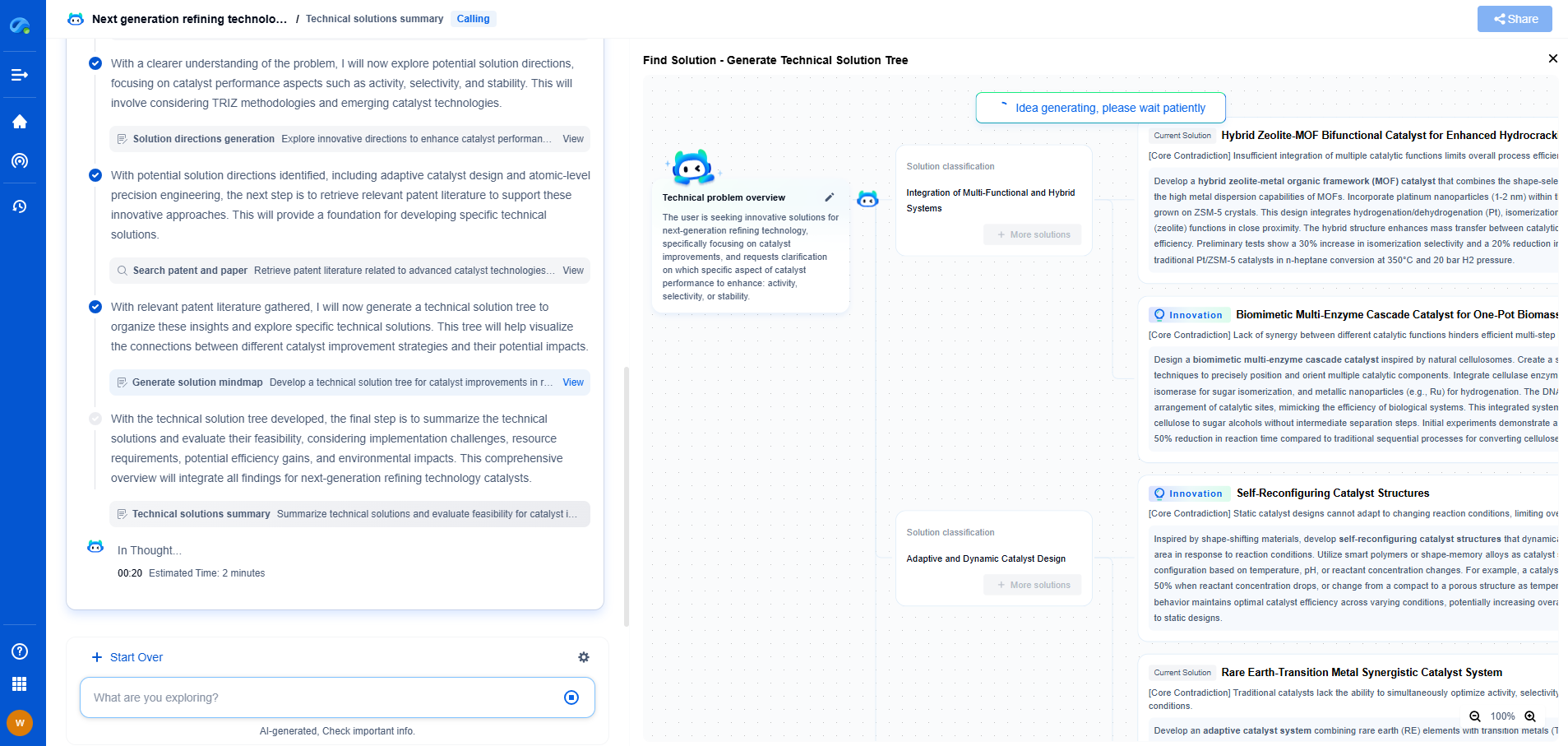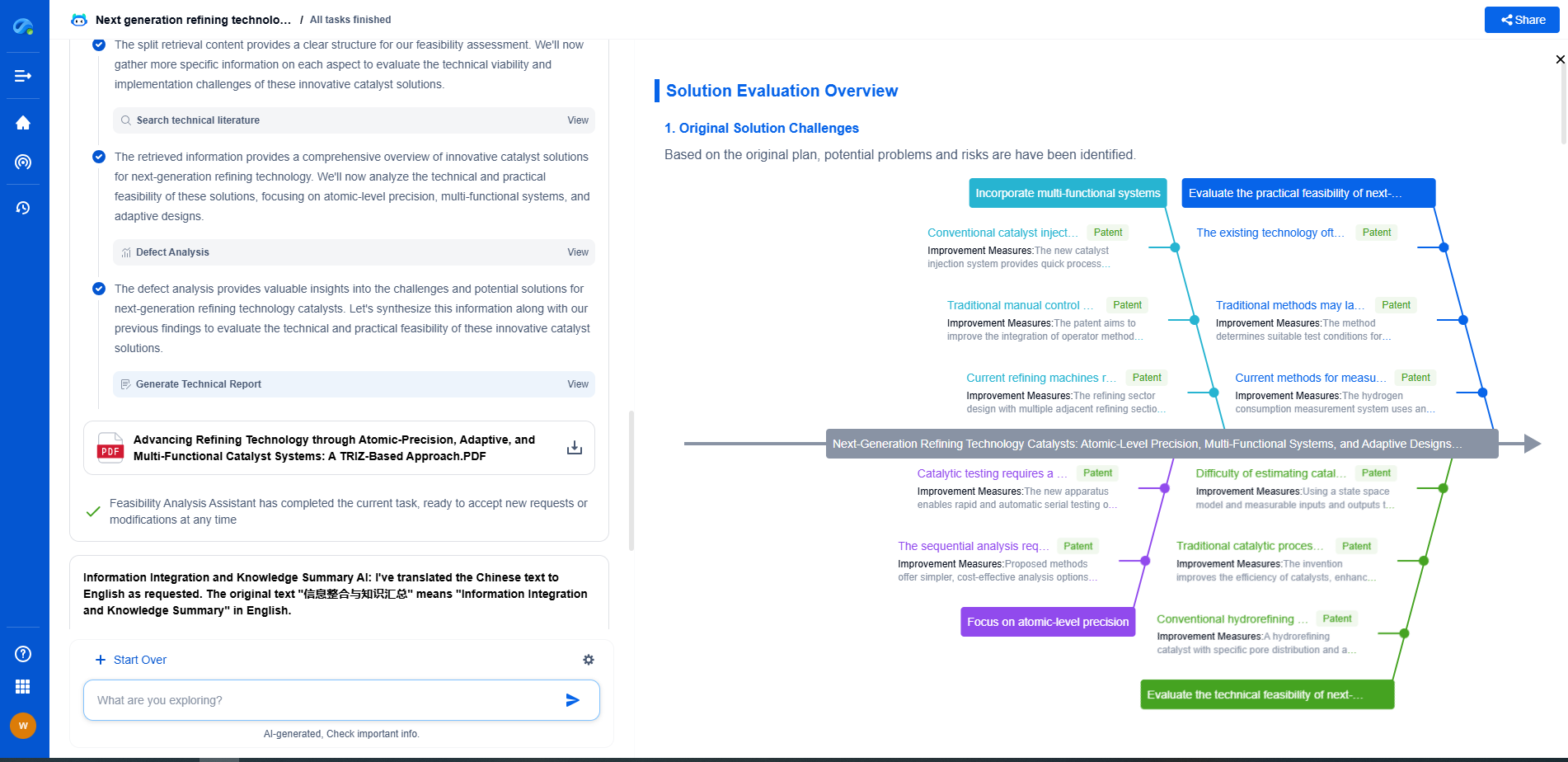Ceramic Electrolyte Sintering: Why Batch Processing Kills Throughput
JUN 20, 2025 |
Ceramic electrolytes are a critical component in a variety of advanced technological applications, including solid oxide fuel cells and next-generation batteries. The process of sintering these ceramic materials is essential to achieving the desired properties and performance. Despite advancements in materials science and engineering, the sintering process remains a bottleneck, particularly due to the prevalent use of batch processing. This article explores the reasons why batch processing hinders throughput in ceramic electrolyte sintering and suggests potential alternatives to improve efficiency.
Understanding Ceramic Electrolyte Sintering
Sintering is a thermal process used to densify ceramic powders into solid structures. For ceramic electrolytes, achieving high density while maintaining the necessary ionic conductivity is crucial. The sintering process involves heating the material to a temperature where particles adhere to each other without melting completely. This results in a reduction of porosity and increased mechanical strength.
Batch Processing: A Traditional Approach
Traditionally, sintering is conducted in batch processing mode. In this setup, ceramics are loaded into a furnace, heated for a specified duration, and then cooled down before the next batch is introduced. This method has been favored due to its simplicity and the ability to maintain uniform temperature profiles across the batch. However, it has several drawbacks that significantly impede throughput.
The Limitations of Batch Processing
1. Time-Consuming Cycles
One of the primary issues with batch processing is the time-consuming nature of the heating and cooling cycles. Each batch requires a complete cycle, which can take several hours, if not more. The downtime between batches further exacerbates the delay. This prolonged processing time restricts the amount of product that can be manufactured within a given timeframe.
2. Energy Inefficiency
Batch processing is also energy-intensive. The entire furnace chamber must be heated and cooled for each batch, regardless of the size of the load. This results in considerable energy wastage, leading to higher operational costs. Additionally, the energy demand can be inconsistent, complicating energy management and sustainability efforts.
3. Lack of Flexibility
Batch processing offers limited flexibility in terms of adjusting to varying production demands. Once a batch is loaded, it is challenging to alter the process parameters. This rigidity can lead to inefficiencies, especially when there is a need to switch between different ceramic compositions or product specifications.
4. Quality Control Challenges
Maintaining uniform quality across batches can be challenging. Variations in temperature distribution and other environmental factors can result in inconsistencies in the sintered product. This variability necessitates additional quality control measures, further slowing down the production process and increasing costs.
Potential Alternatives to Batch Processing
To overcome the limitations of batch processing, several alternative approaches can be considered:
1. Continuous Sintering
Continuous sintering processes, such as conveyor belt kilns, offer a promising solution. By continuously feeding ceramic materials through a heated zone, these systems can significantly reduce cycle times and improve throughput. Temperature and atmosphere can be precisely controlled, leading to more consistent product quality.
2. Advanced Furnace Technologies
Implementing advanced furnace technologies, such as microwave or spark plasma sintering, can dramatically reduce sintering times and energy consumption. These methods provide rapid and uniform heating, allowing for faster densification of ceramics.
3. Process Optimization and Automation
Utilizing process optimization and automation can enhance the efficiency of sintering operations. By employing real-time monitoring and control systems, manufacturers can dynamically adjust process parameters to minimize energy use and maximize throughput.
Conclusion
While batch processing has long been the standard in ceramic electrolyte sintering, its limitations in terms of throughput, energy efficiency, and flexibility are increasingly evident. By exploring alternatives such as continuous sintering and advanced furnace technologies, manufacturers can overcome these challenges and enhance the production of ceramic electrolytes. Embracing innovation in processing techniques will not only improve throughput but also contribute to more sustainable and cost-effective manufacturing practices in the ceramics industry.
Accelerate Breakthroughs in Fuel Cell and Battery Innovation—with the Power of AI
From solid-state battery breakthroughs to high-efficiency hydrogen fuel cells, keeping pace with fast-evolving chemistries, global patent landscapes, and emerging application pathways is an ever-growing challenge for R&D and IP professionals.
Patsnap Eureka, our intelligent AI assistant built for R&D professionals in high-tech sectors, empowers you with real-time expert-level analysis, technology roadmap exploration, and strategic mapping of core patents—all within a seamless, user-friendly interface.
Whether you're optimizing cathode formulations, evaluating electrolyte stability, or navigating the crowded patent space around battery pack design, Eureka empowers you to move faster and with greater confidence.
Start your journey with Patsnap Eureka today—streamline your research, enhance decision-making, and power the future of energy with AI-driven clarity.
- R&D
- Intellectual Property
- Life Sciences
- Materials
- Tech Scout
- Unparalleled Data Quality
- Higher Quality Content
- 60% Fewer Hallucinations
Browse by: Latest US Patents, China's latest patents, Technical Efficacy Thesaurus, Application Domain, Technology Topic, Popular Technical Reports.
© 2025 PatSnap. All rights reserved.Legal|Privacy policy|Modern Slavery Act Transparency Statement|Sitemap|About US| Contact US: help@patsnap.com

